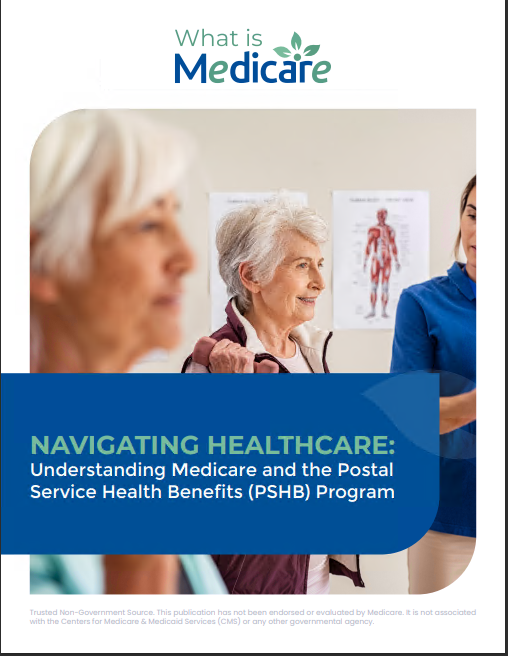Key Takeaways
- Planning ahead and understanding the various components of Medicare costs can help avoid unexpected expenses.
- Regularly reviewing and updating your knowledge about Medicare costs will help you manage your healthcare budget more effectively.
Avoiding Surprises with Medicare Costs: What You Need to Know
Navigating the complexities of Medicare can be challenging, particularly when it comes to understanding the costs involved. Medicare consists of several parts, each with its own cost structure, potential hidden fees, and income-based premium adjustments. By being informed and prepared, you can better manage your healthcare expenses and avoid financial surprises. This article covers the essential aspects of Medicare costs, from basic cost structures to strategies for managing out-of-pocket expenses.
Understanding the Essentials of Medicare’s Cost Structure
Medicare is divided into different parts, each covering specific services and having its own associated costs. Here’s a brief overview:
- Medicare Part A: Covers hospital stays, skilled nursing facility care, hospice care, and some home health care. Most people do not pay a premium for Part A if they or their spouse paid Medicare taxes for at least 10 years. However, there are other costs such as deductibles and coinsurance.
- Medicare Part B: Covers outpatient care, preventive services, ambulance services, and durable medical equipment. Part B comes with a standard monthly premium, an annual deductible, and coinsurance, where you typically pay 20% of the Medicare-approved amount for services after meeting the deductible.
- Medicare Part C (Medicare Advantage): Offered by private insurance companies, these plans must cover all services that Original Medicare covers and may offer extra benefits. Costs vary widely depending on the plan and the services used.
- Medicare Part D: Provides prescription drug coverage. Part D plans have premiums, deductibles, and copayments or coinsurance, with costs varying by plan and medication.
- Medicare Supplement Insurance (Medigap): These policies help pay some of the out-of-pocket costs not covered by Original Medicare, like copayments, coinsurance, and deductibles. Costs depend on the plan and the insurance company offering it.
Unexpected Fees and Extra Expenses
While the basic cost structures of Medicare are relatively straightforward, there are several potential extra expenses to be aware of:
- Late Enrollment Penalties: If you delay enrolling in Medicare Parts B or D when you are first eligible, you may face late enrollment penalties. These penalties can increase your premiums for as long as you have Medicare coverage.
- Excess Charges: Some doctors do not accept the Medicare-approved amount as full payment and may charge you up to 15% more than the Medicare-approved amount for services. These are known as excess charges and can add to your out-of-pocket costs.
- Service-Specific Costs: Certain services, such as dental, vision, and hearing care, are not typically covered by Medicare. If you require these services, you will need to pay out-of-pocket or consider additional insurance plans.
- Prescription Drug Costs: Depending on your Part D plan, you may face higher out-of-pocket costs for certain medications, especially if they are not on your plan’s formulary or if you reach the coverage gap (also known as the “donut hole”).
- Out-of-Network Costs: If you have a Medicare Advantage Plan, using out-of-network providers can result in higher costs. It’s important to understand your plan’s network and coverage rules to avoid unexpected charges.
The Effect of Income on Medicare Premiums
Your income can significantly affect your Medicare costs, particularly for Part B and Part D premiums. These premiums are based on your modified adjusted gross income (MAGI) from two years prior, as reported on your IRS tax return. Higher income beneficiaries may pay an Income-Related Monthly Adjustment Amount (IRMAA) in addition to the standard premium.
Here’s how it works:
- Medicare Part B Premiums: For those with higher incomes, Part B premiums increase in tiers based on income levels. The higher your income, the higher your premium.
- Medicare Part D Premiums: Similarly, higher-income beneficiaries pay an additional amount on top of their plan’s premium for Part D coverage.
It’s important to be aware of how your income impacts your premiums and plan accordingly. If your income decreases significantly, you can request a reassessment of your IRMAA by contacting the Social Security Administration.
Managing Out-of-Pocket Costs
Out-of-pocket costs include deductibles, copayments, and coinsurance that are not covered by Medicare. These costs can add up quickly, so it’s important to plan for them:
- Medicare Supplement Insurance (Medigap): These policies can help cover some of the costs not paid by Original Medicare. Different plans cover different costs, so it’s essential to compare plans based on your healthcare needs.
- Medicare Advantage Plans: Some Medicare Advantage Plans may have lower out-of-pocket costs compared to Original Medicare. However, you need to carefully review each plan’s network, coverage, and cost-sharing requirements.
- Out-of-Pocket Maximums: Unlike Original Medicare, Medicare Advantage Plans have an annual out-of-pocket maximum, which can provide some financial protection against high healthcare costs.
- Preventive Services: Take advantage of Medicare-covered preventive services, which can help you avoid more serious and costly health issues in the future.
Ways to Manage and Reduce Your Medicare Expenses
There are several strategies you can use to manage and reduce your Medicare expenses effectively:
- Review Your Coverage Annually: Medicare plans and costs can change each year. Review your coverage during the Medicare Open Enrollment Period (October 15 – December 7) to ensure you have the best plan for your needs.
- Consider Your Prescription Drug Coverage: Evaluate your Part D plan each year to ensure it covers your medications at the lowest cost. Consider using generic drugs or mail-order pharmacies to save money.
- Stay In-Network: If you have a Medicare Advantage Plan, use network providers to minimize your out-of-pocket costs. Verify that your preferred doctors and hospitals are in-network before receiving services.
- Apply for Extra Help: If you have limited income and resources, you may qualify for the Extra Help program, which can help pay for Part D premiums, deductibles, and copayments.
- Use Preventive Services: Medicare covers many preventive services at no cost to you. Regular screenings and check-ups can help detect health issues early and reduce long-term healthcare expenses.
Staying Informed and Prepared
Understanding and managing Medicare costs can be complex, but staying informed and reviewing your options annually can help you avoid unexpected expenses and make the most of your coverage. Keep track of changes in Medicare rules, review your plan details regularly, and consider reaching out to licensed insurance agents for personalized advice.
By taking proactive steps and planning ahead, you can navigate the Medicare system more effectively and avoid financial surprises. Remember, being informed is your best tool for managing your healthcare costs.
Contact Information:
Email: [email protected]
Phone: 4695554567








